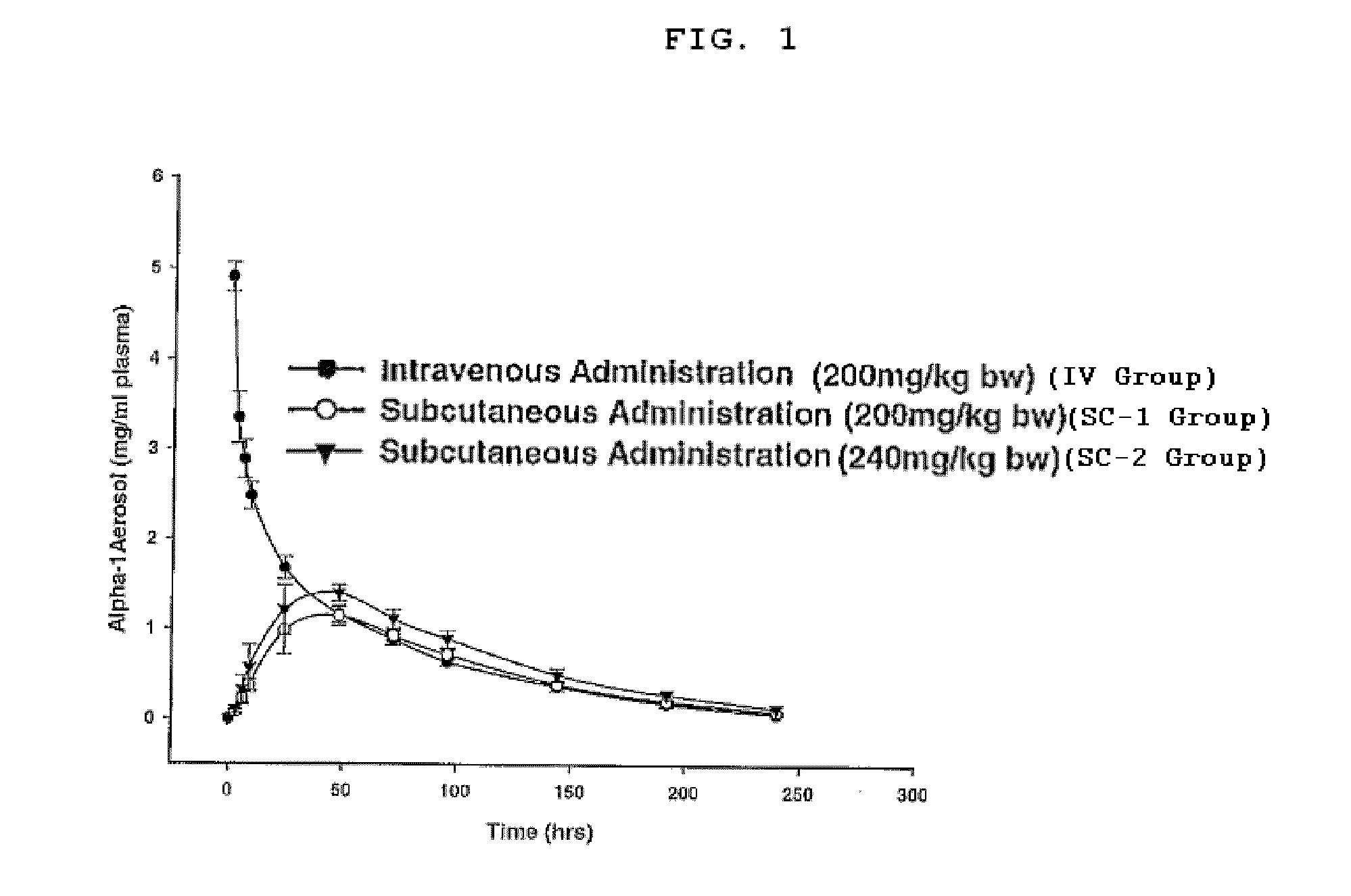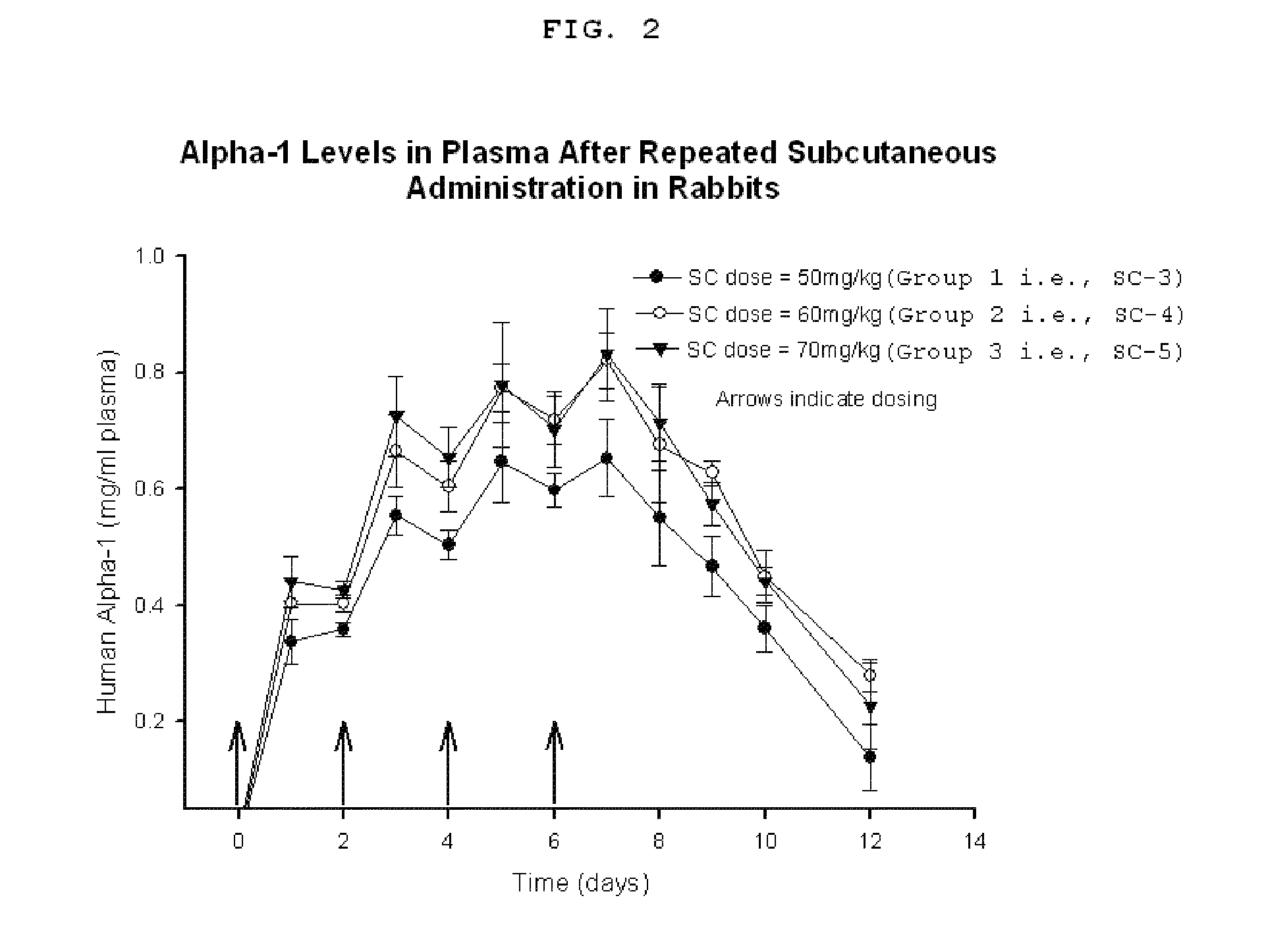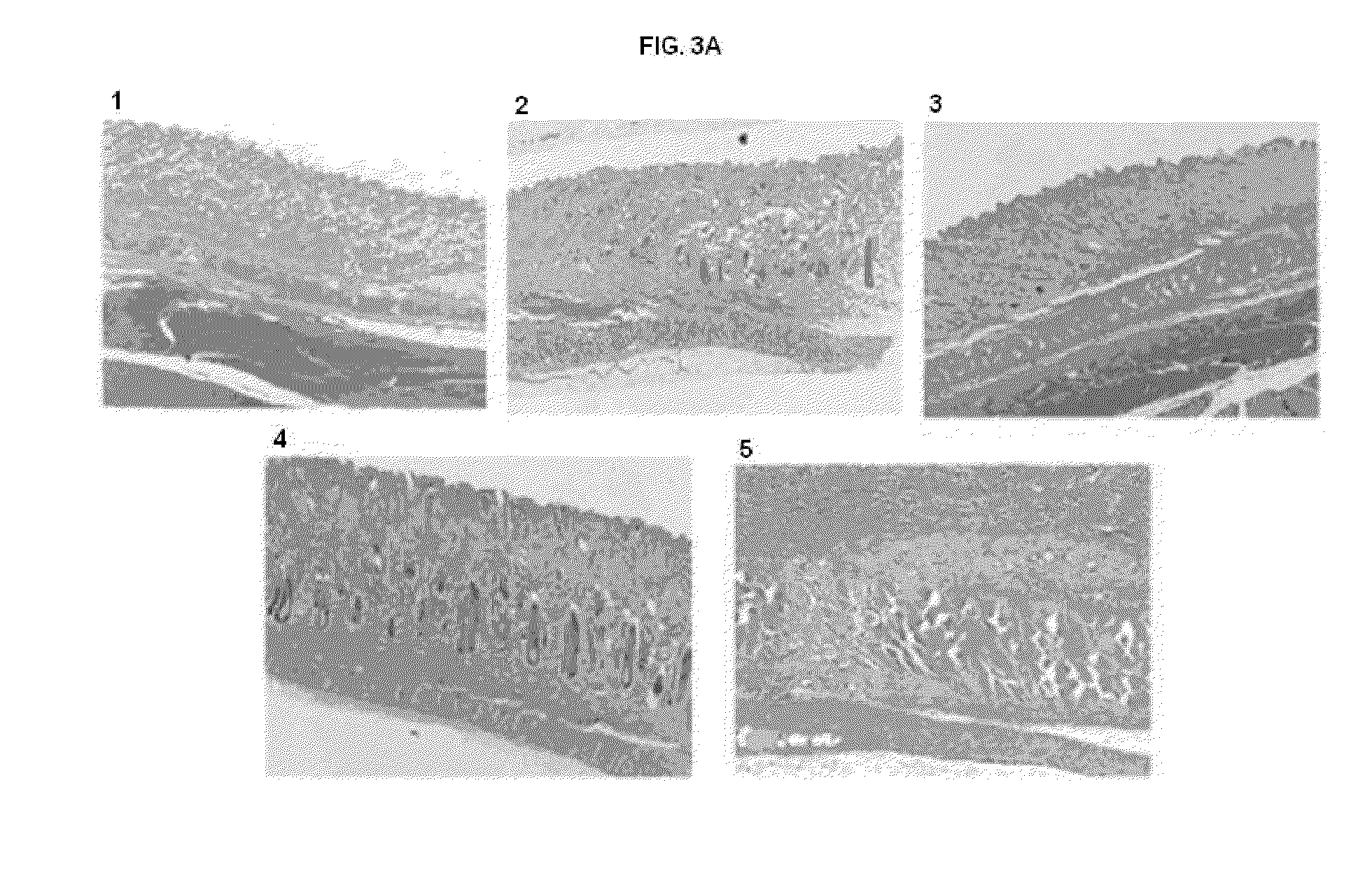Method, composition, and article of manufacture for providing alpha-1 antitrypsin
a technology of antitrypsin and composition, applied in the field of providing alpha-1 antitrypsin, can solve the problems of slow destruction of the connective tissue integrity of the lungs, insufficient difference to account for low plasma levels, and reduced retractive for
- Summary
- Abstract
- Description
- Claims
- Application Information
AI Technical Summary
Benefits of technology
Problems solved by technology
Method used
Image
Examples
example 1
Plasma Bioavailability of Subcutaneously Administered Human α1-AT
[0065]To determine the plasma bioavailability of α1-AT following subcutaneous (SC) administration (and, to compare it with intravenous injection of α1-AT), single administration of two subcutaneous dose levels were examined and compared to a single intravenous administration of α1-AT.
[0066]New Zealand White rabbits (˜3 kg body weight) were acclimated for at least 1 week prior to use. Food and water were provided ad libitum. Rabbits were monitored daily for well being.
[0067]Rabbits were assigned into Groups A, B or C (N=5 each) of similar body weight. Rabbits were treated with acepromazine (1.0 mg / kg body weight) by SC injection to facilitate vasodilation in the ears. Nair® or other depilatory was applied to the ear to facilitate removal of hair and to expose the blood vessels. Five to ten minutes later, the Nair® and hair were removed by wiping with wet gauze sponges until all cream was removed. Ears were dried and the...
example 2
Plasma Bioavailability After Repeated Subcutaneous Administration of Human α1-AT
[0073]Plasma bioavailability of α1-AT following three repeated subcutaneous (SC) administrations were examined.
[0074]Rabbits were prepared as above and assigned to three groups and dosed on day 0, 2, 4, and 6. Group 1 rabbits (i.e., SC-3) were dosed at 50 mg / kg, Group 2 rabbits (i.e., SC-4) were to dosed at 60 mg / kg, and Group 3 rabbits (i.e., SC-5) were dosed at 70 mg / kg. Blood samples were collected at 1, 2, 3, 4, 5, 6, 7, 8, 9, 10, and 12 days post dosing and processed as above for analysis.
[0075]As shown in FIG. 2, the plasma levels of subcutaneously administered α1-AT in all the three groups (i.e., SC-3, SC-4, and SC-5) continued to rise with repeated administration up to day 7 and thereafter the levels gradually declined towards baseline by day 12. The AUC of SC-3, SC-4, and SC-5 were 127±11, 159±8, and 162±12, respectively. The fractional availability (F), which was determined by comparing the AUC...
example 3
Injection Site Histopathology of SC Administered Human α1-AT
[0076]To determine injection site histopathology and the presence of human α1-AT in lung tissue, immunohistochemistry was performed after repeated subcutaneous administration of human alpha-1 antitrypsin (h-AT) in rabbits.
[0077]All animal procedures were approved by Institutional Animal Care and Use Committee (IACUC) at North Carolina State University. Male New Zealand White rabbits, after arrival at the animal facility, were acclimated for at least 1 week prior to use. During this acclimation period, each animal was placed in a restrainer, three times / week for a minimum of 15 minutes to acclimate the animal to the restrainer. Food and water were provided ad libitum. Rabbits were monitored daily for well being.
[0078]Animals were weighed and assigned to groups (n=3) of approximately equal body weight as shown in Table 3.
TABLE 3Study designTotalVolumeTissueGroupsNTreatments(mL)Collection TimeGroup 1-A3Alpha-1 Antitrypsin Dail...
PUM
| Property | Measurement | Unit |
|---|---|---|
| body weight | aaaaa | aaaaa |
| body weight | aaaaa | aaaaa |
| body weight | aaaaa | aaaaa |
Abstract
Description
Claims
Application Information
 Login to View More
Login to View More - R&D
- Intellectual Property
- Life Sciences
- Materials
- Tech Scout
- Unparalleled Data Quality
- Higher Quality Content
- 60% Fewer Hallucinations
Browse by: Latest US Patents, China's latest patents, Technical Efficacy Thesaurus, Application Domain, Technology Topic, Popular Technical Reports.
© 2025 PatSnap. All rights reserved.Legal|Privacy policy|Modern Slavery Act Transparency Statement|Sitemap|About US| Contact US: help@patsnap.com



